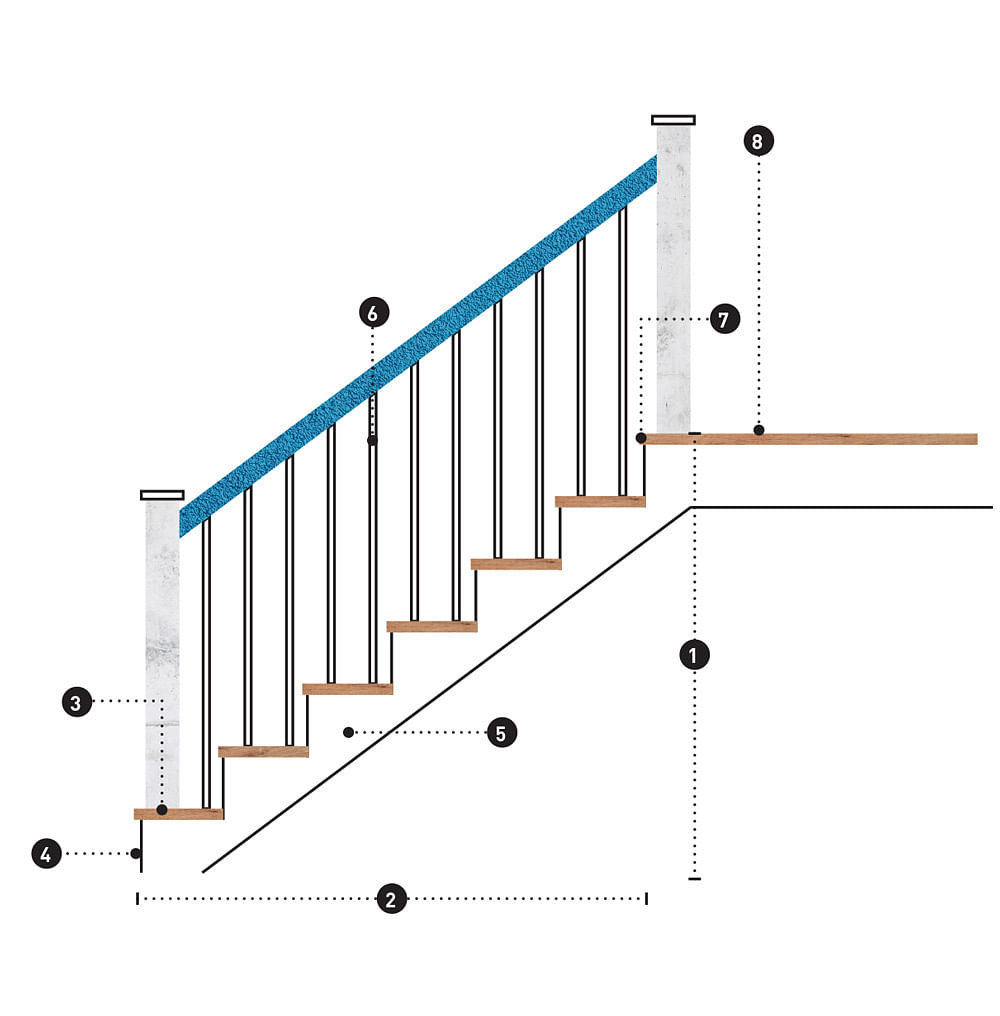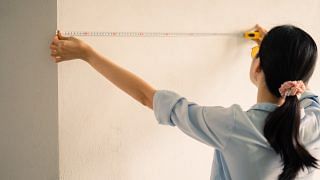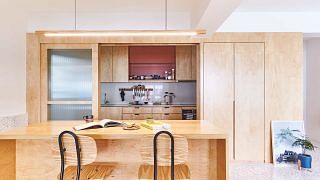
STAIRCASE ANATOMY
1. Rise
This is the total height of the stairs, determined by the riser height and number of steps you have.
2. Run
The length of the run is the total dimension of the treads. The run and gradient of the stairs are related — for a gentler ascent (deeper treads and lower risers), you will need a longer run.
3. Tread
The stair treads are where you step on while climbing the stairs, and therefore the size is determined by the average adult foot size. The ideal depth of each tread is a minimum of 25cm.
4. Riser
All risers should be exactly or at least nearly the same height. Varying heights break the rhythm as calculated by the brain as we climb the stairs, and may cause tripping. The ideal riser height is a maximum of 18cm.
5. Stringer
This is the housing on the side of a flight of stairs, containing the treads and risers. Depending on its design, a staircase can have two stringers (on either side), or just one (in the middle as a support, or on the outside).
6. Railing
This is a practical feature, necessary for heights from one metre, as it prevents falling off an open side. It can be designed in numerous ways. For example, it can be composed of balusters and a handrail made of wood, or glass panels. The ideal handrail height is between 75 and 95cm. For comfortable gripping, the ideal size of the handrail is between 3 and 6.5cm.
7. Nosing
The nosing is the edge finishing of the treads that makes the stairs more comfortable to climb (especially barefoot), although inessential. However, it mustn’t overhang too much, lest it becomes a tripping hazard. The ideal range is 0.6 to 2cm.
8. Landing
A flight of stairs should not have a rise with a height of over 3.6 metres between landings or floor levels. (That equates to around a maximum of 20 risers.) Landings provide a transition between flights of stairs, and should have a minimum depth of 90cm. If there are doors, the arc of the door swing should not overlap onto the stair treads, as this could be a hazard — when opening the door, you will have to step backwards down the stairs.




